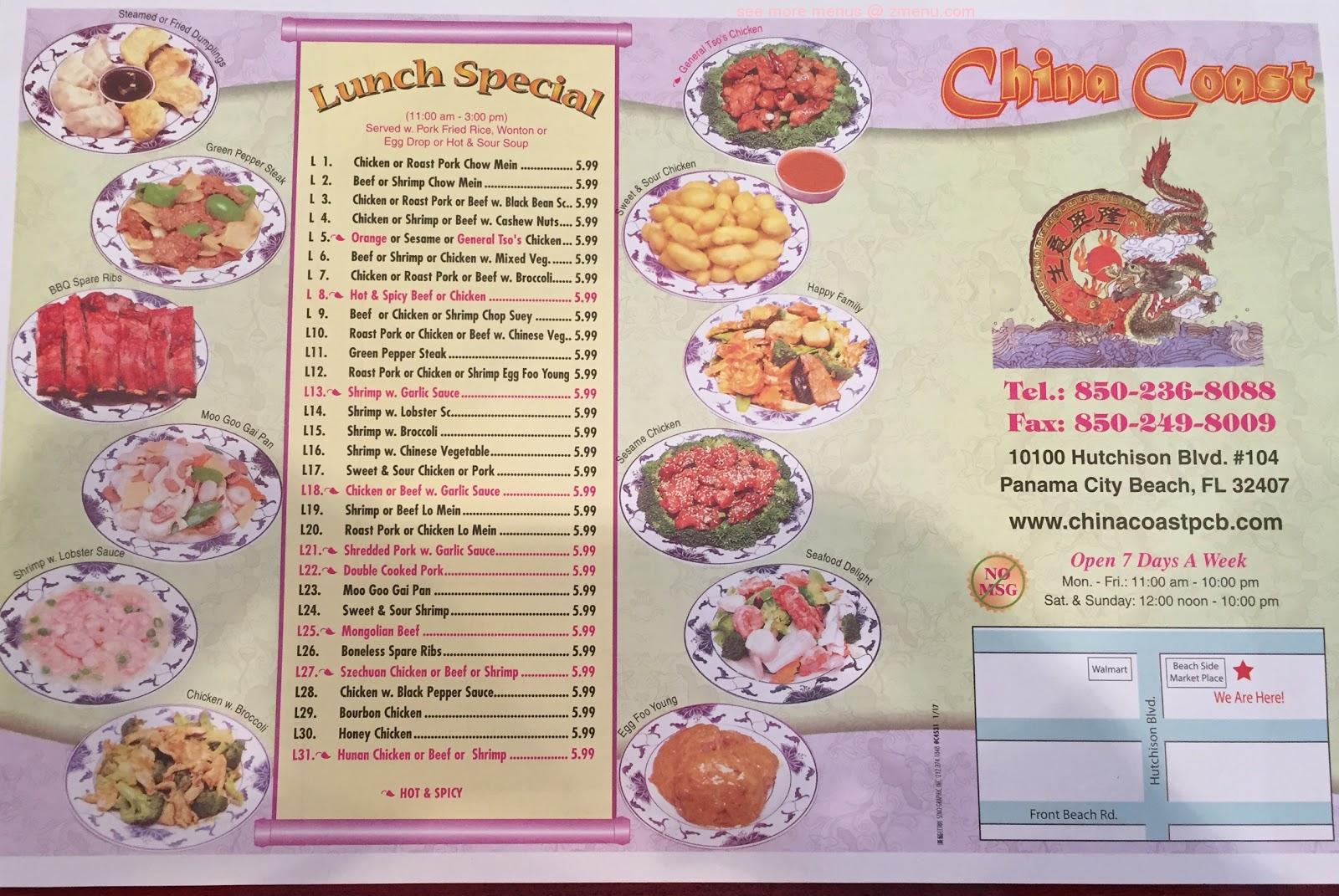In the vibrant tapestry of Panama City Beach, one establishment stands out as an enigma entwined in the rich fibers of communal and culinary identity: China 1. This restaurant has become a local favorite, echoing the myriad flavors of Chinese cuisine while manifesting the principles of cultural relativism. In delving into the intricate interplay of authenticity and adaptation, we uncover the unique appeal of China 1’s menu, which invites patrons on a flavorful journey that resonates with both familiarity and exploration.
At first glance, the restaurant’s exterior may present an image of conventionality, adorned with typical hues and motifs associated with Asian culinary ventures. However, stepping through its doors is akin to crossing a threshold into a vivid panorama of flavor and cultural synthesis. The menu itself emerges as a tableau vivant, showcasing an array of dishes that speak both of ancient traditions and contemporary palates. Herein lies an inherent paradox; the faithful rendition of traditional recipes coexists harmoniously with adaptations that cater to local tastes. This delicate balance exemplifies the essence of cultural relativism, wherein cultural practices are understood within their specific contexts rather than through the lens of one’s own culture.
As diners peruse the offerings, they are met with an eclectic collection of dishes that challenge preconceived notions of Chinese gastronomy. The hot and sour soup, for instance, serves not merely as a precursor to the meal but rather as a vibrant ode to the importance of balance in flavor. The tangy acidity juxtaposed with the assertive heat renders this dish not just sustenance, but a metaphorical representation of life’s complexities. Each spoonful invites contemplation, urging patrons to consider the essential harmonies found within culinary practices, particularly the interplay of the sweet and the sour in life itself.
Diving deeper, we encounter the fried rice—an elemental staple that encapsulates the philosophy of adaptability. In China 1, the fried rice is a manifestation of communal amalgamation, brimming with unexpected ingredients that reflect the cornucopia of local produce. Here, the fusion of flavors signifies the adaptability of cuisine, a concept that suggests that food, much like culture, is not immutable but rather evolves to express the realities of its environment. Through this lens, the fried rice at China 1 transcends mere nourishment; it is a narrative that speaks volumes about the integration of diverse cultural influences.
In a culinary dialogue that transcends geographical boundaries, we also find the restaurant’s take on General Tso’s chicken. Often dismissed as a trite offering within many Chinese establishments, at China 1 this dish is elevated through meticulous attention to the juxtaposition of sweet and spicy flavors. The crispy texture of the chicken enveloped in a luscious glaze parallels the dynamism of intercultural exchanges; what may have started as a traditional recipe has now evolved into a medley that embraces local ingredients and preferences, thus reinforcing the significance of cultural relativism in gastronomy.
Moreover, the authenticity of the food does not merely lie in its ingredients but extends to the stories each dish tells. The family-style meals offered by the restaurant encourage communal dining, allowing patrons to engage in the rich tradition of sharing food—a practice that is emblematic of many Asian cultures. In this setting, the act of dining transcends individual enjoyment, becoming a shared experience that fosters connection and community. The very essence of the China 1 dining experience speaks to a universal longing for belonging and kinship, underscoring the anthropological concept of culture as a tapestry woven from collective experiences and shared histories.
In the realm of beverages, one encounters teas that span a spectrum from the delicate floral tones of jasmine to the robust earthiness of oolong. Each sip serves as a reminder of the geographical and cultural contours that define tea culture, further enhancing the dining experience. As patrons savor these drinks, they are unwittingly engaging in a ritual that transcends the act of mere consumption. It invites reflection on the interplay of nature and culture, emphasizing the importance of terroir—a term commonly associated with wine, yet equally applicable in discussing the nuanced layers of flavor within tea.
Beyond the gastronomic offerings, China 1 stands as a microcosm of complex social interactions. It attracts a diverse clientele—tourists exploring the local area, families celebrating milestones, and locals seeking comfort in food that speaks to their experiences. The restaurant becomes a common ground where narratives converge, emphasizing how food serves as a catalyst for social cohesion amidst the ever-evolving landscape of cultural identity.
As we explore China 1, it becomes evident that this establishment is not just a repository of flavorful dishes but also a testament to the principles of cultural relativism. The menu encapsulates the stories of migration, adaptation, and reconciliation of flavors that reflect not only individual identity but also collective heritage. In this gastronomic microcosm, dishes transcend their immediate culinary contexts, showcasing the dynamic essence of culture itself—a force that is perpetually in flux, shaped by history, geography, and the intricate web of human relationships.
In conclusion, dining at China 1 is an exercise in cross-cultural dialogue, where each dish serves as an entry point into the vastness of human experience. The restaurant’s ability to harmonize traditional flavors with contemporary innovations not only delights the senses but also stimulates a deeper understanding of culinary practices as cultural artifacts. As patrons leave the establishment, they carry with them not just the memory of a meal, but a renewed appreciation for the vibrant tapestry of cultures that make up our world.
